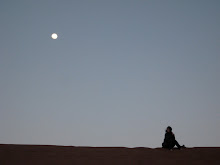Original article at the Brooklyn Rail HERE
I understand why the person next to me drooled all over his shirt, nodding off like so many in the audience. More Mouvements für Lachenmann wasn’t exactly entertaining. It required a certain amount of austerity on the part of the viewer—while prompting a few embarrassing attempts at physical showmanship by its performers.
The first piece was a solo for the cello performed by Andreas Lindenbaum. All of the evening’s music was composed by Helmut Lachenmann, with choreography by the French choreographer Xavier Le Roy. As the evening progressed, the distinction between music and choreography became quite obvious, but in the case of this first solo, “Pression,” one man simply played his instrument for the audience. Sure, there was plenty to look at—tapping the bow, and other actions with the instrument that didn’t beget traditional sounds but instead created out of the ordinary ways for a person and object to interact. The resulting hissing or scraping we heard came almost secondarily, but was indeed a major aspect of the full Lachenmann experience. Still, it wasn’t a jarring choreographic experience. It was Lachenmann’s work, perhaps intentionally left alone by Le Roy in order to give the audience an intellectual base, a kind of control group, to compare with his later experiments with form.
Le Roy’s first career as a molecular biologist is well known, and this evening’s work looks as if it was created through an application of scientific method. The second piece, “Salut für Caudwell,” started from the absolute beginning. Four musicians brought out their chairs—two in front and two behind—as well as music stands and custom-made moveable walls that blocked the audience’s view of the back two chairs. The musicians behind the walls played their guitars while the musicians in front played air guitars. Sometimes their timing matched up, so that what you saw mimicked what you heard, but this structure became tedious after a few minutes. Life was injected into the show at moments when the symmetry was knocked off by human error, or when the sheet music of the musicians pretending to play their instruments differed from the music of those behind them.
All in all, “Salut” is easy enough to “get,” and for the duration of the exercise either boring and grating or meditative and spacious, depending on your point of view. For me, it changed from moment to moment. At first, the more intently I focused on it, the less I wanted to close my eyes, scream, tear my hair out, or stand up and leave. At a certain point, however, following the intricacies of the asymmetry was crazy-making, especially without having sheet music to refer to, and moments of listening without looking became an absolute necessity. Surely, this audience impulse was expected and built in to the piece. Though it’s hard not to refer to the work as simple, it’s anything but tossed off; it’s very clear that Le Roy doesn’t build a performance around what people want to see. Part of his charm as a maker of dances is that even if you don’t like a specific work, it doesn’t feel like a disaster, because there isn’t that sense that he failed while trying hard to please or entertain you. Instead, it feels as though you’re watching an artist try to bring to life a concept that is intellectually intriguing to him and it happens to not be compelling to watch all the way through. That’s not such a bad brand of failure.
Where the show did go too far and actually become a bit lame was toward the end of the final piece, “Gran Torso.” We had already had an example of a musician making music on their instrument; and then musicians pretending to play while others made the music; so it did make sense to round the evening off with musicians miming the actions they would use to make music, but doing so in silence. And this is exactly what happened. Six musicians sat on the stage in a half circle with their string instruments, played them a bit, and then stopped and stared back at the audience before continuing on with the actions in silence.
Some people in the crowd might not have seen the staring trope on stage before; there was a bit of laughter and the beginning of applause indicating that people didn’t know what to do with the first (or second) long pause from the stage. Even for those familiar with such a strategy, the recycling of such a simple move isn’t really a problem. It refers to a conceptual dance vocabulary that does in fact exist and can of course be used when appropriate. But the aesthetics of this last section were, unfortunately, off enough that even the stopping and staring felt contrived and annoying. When Le Roy got to where he was going—making pure physical actions out of the actions of musicians—the idea sat flatly, not beautifully, on stage. As the musicians tried to sell his idea (and to their credit, they were fully committed) the potential in the first two pieces disappeared into disappointment.
There are plenty of evenings I wish I could relive, doing anything other than watching the performance piece I was seeing. This is not one of them. Besides the intriguing new sounds and extremely high level of skill (at least with creating new music) that the musicians displayed, there was an idea being tossed around that I’d never seen worked through in quite this way. It brought a rare clarity to mind—and even seemed to have always existed, much the way scientific discoveries fit seamlessly into the world, as they uncover and illuminate phenomena that were already there.

No comments:
Post a Comment